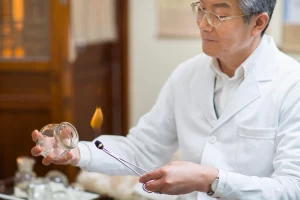
The Timeline of Medicine is the chronological narrative of the development and progress of the medical field since the dawn of civilization. It includes notable milestones in the history of both ancient and modern medicine, as well as significant contributions to the advancement of the field.
Ancient Times and Medieval Europe
Beginning with ancient times, the timeline highlights the first recorded accounts of healing arts practices, such as the Ancient Egyptian Ebers Papyrus, which dates back to 1550 BC. During this period, Hippocrates established a system for understanding the human body and its illnesses that are still used today – known as The Four Humours Theory. This theory became an integral part of early medical thinking for centuries afterward.
Moving onto medieval Europe, the timeline features several critical developments from the Arabic world, such as the practice of alchemy and the writing of the Canon of Medicine by the Persian philosopher Avicenna. Later in the medieval era, the timeline looks at the rise of medical schools, notably the University of Bologna, which established a regulated medical curriculum for the first time.
The Renaissance Period
The medicine timeline then moves onto the renaissance period, where advances in anatomy began, including the groundbreaking work of Andreas Vesalius, who wrote De humani corporis Fabrica (On the Fabric of the Human Body), a seven-volume set that revolutionized our understanding of anatomy and is still used today. In addition, this period saw significant breakthroughs in pharmacology with Paracelsus’ use of chemicals and the invention of the clinical thermometer.
The 19th Century
The timeline of medicine culminates in the 19th century, the dawn of the modern medicine age. This period saw the introduction of the germ theory by Louis Pasteur and the development of antiseptic surgery by Joseph Lister. It also features the discovery of penicillin by Alexander Fleming, which marked a significant breakthrough in the fight against bacterial infections and diseases.
The Germ Theory is a foundational concept in the field of medicine. It states that many diseases are caused by microorganisms, like bacteria and viruses, which can only be seen with the assistance of a microscope. This theory led to further developments in medical technologies and treatments, enabling us to combat diseases that were once considered untreatable effectively. The Germ Theory also revolutionized public health with its emphasis on hygiene – leading to improved sanitation standards and increased safety protocols for food production. Today, it continues to guide medical research and treatments around the world.
Antiseptic refers to preventing infection by killing microorganisms on or in the body. It is used as a surgical tool to help reduce the risk of contamination during procedures, but it can also be applied for other medical purposes, such as wound care and skin treatments. Common antiseptics include hydrogen peroxide, iodine, and alcohols such as ethanol and isopropyl.
Penicillin is an antibiotic derived from a type of mold called Penicillium. It works by disrupting the bacteria’s cell wall and preventing it from growing, thus inhibiting the spread of infection. First discovered in 1928, it was hailed as a “miracle drug” and is still used to treat many bacterial infections. Penicillin revolutionized modern medicine and paved the way for further developments in antibiotics.
The timeline of medicine shows us that modern medicine has been shaped by centuries of advancements in research and technology – from ancient times to today’s cutting-edge treatments. What began as art has now evolved into a precise science with well-defined principles and protocols constantly being improved. The timeline provides a fascinating insight into this.
Overall, the History of Medicine timeline provides an invaluable guide to understanding the ever-evolving field of medicine and its impact on human history. Spanning thousands of years, it highlights significant advances made by physicians, scientists, and researchers that have changed our lives forever.
Medical Practices no Longer Used Today.
Throughout history, medical science has developed and improved drastically. Medical practices have come in and out of fashion over the years, with some no longer deemed viable solutions to ailments. Below are a few examples of medical treatments that cannot be found in today’s clinics or hospitals:

- Bloodletting – historically, bleeding was thought to be effective for easing physical pain and treating diseases such as fever and hypertension. While more closely associated with ancient cultures, bloodletting was still widely practiced until the 19th century, before it fell out of favor.
- Cupping – this popular folk remedy dates back to Ancient Egypt and involves suctioning cups onto a person’s skin to draw out toxins or parasites from the body. Cupping is still used today in some cultures, but it’s been largely discredited as a medical practice by the modern scientific community.
- Leeches – while they may be seen as pests in many countries, they were once considered effective treatments for bleeding disorders and infections. Medical practitioners would use them to drain away blood or extract toxins from patients. People abandoned this practice in the 19th century after developing better alternatives.
It’s important to note that the development of medical science is not a linear process — what was widely accepted as fact decades ago may no longer be applicable today. Medical practices no longer used today have their place in history but should not be relied upon as viable solutions for ailments. Patients should always consult their doctor or healthcare provider before pursuing treatment regimens.



